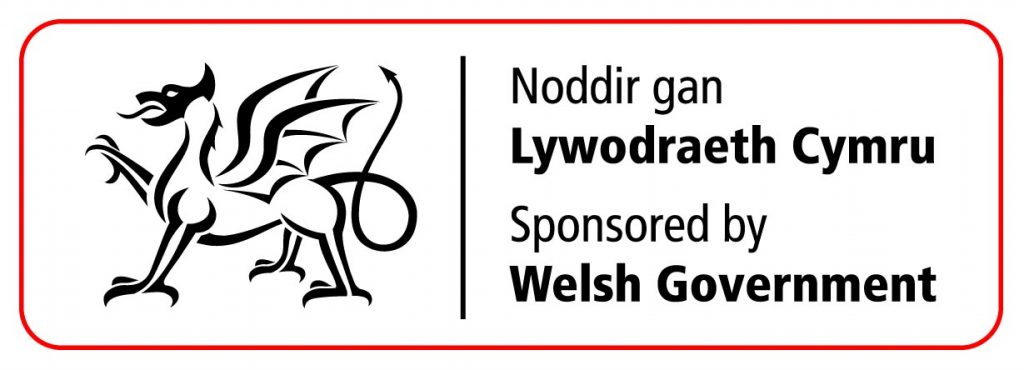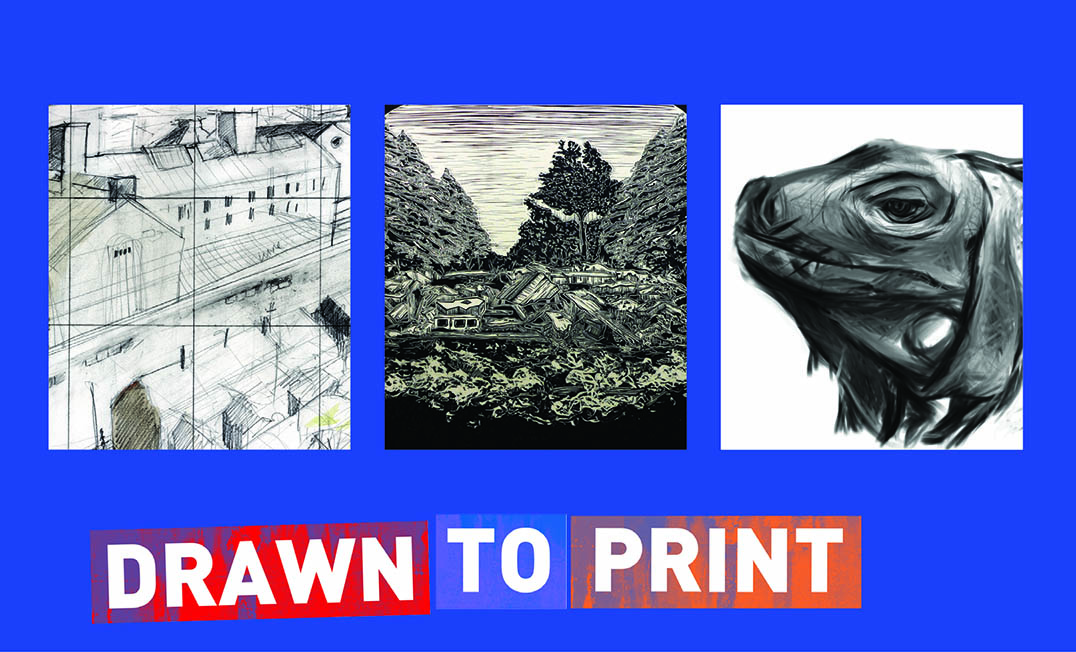The relationship between drawing and printmaking offers great creative potential and plays an important role in the Workshop’s activities. This project brought new technologies, printmaking techniques and approaches into the studio which explore and support the wider activity of drawing and its translation into an original print. We also gained valuable insight and understanding of how we can further develop our audiences for the long-term health of the organisation.
View the exhibition catalogue here
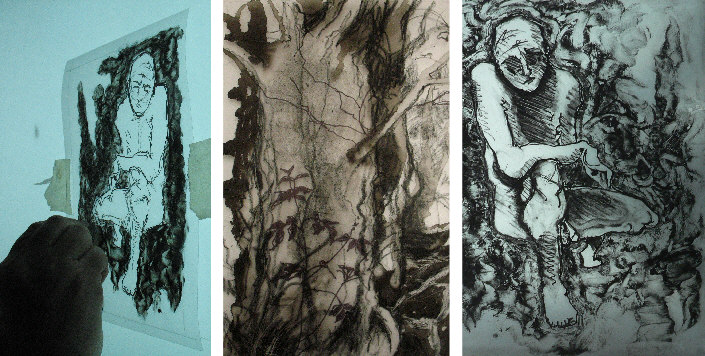
The project set an agenda to explore new boundaries of current practice supporting the activity of drawing and the translation of this material into non-traditional and traditional print processes associated with the production of an original print.
The relationship between a direct drawing process and printmaking is one of great creative potential open to a variety of approaches which can be supported by a wide range of technologies and materials. The project enabled us to explore the breadth of this relationship through three artists residencies each one illustrating an aspect or approach which demonstrated the close connection between gathering original [non photographic] material and the most direct processes of translation into print.
Fiona Kelly challenged artists with new approaches and resources for drawing, Ros Ford introduced the photopolymer intaglio printmaking technique to the Workshop; Aoife Layton added mezzotint to the processes we now offer. Aoife Layton also launched the iPad as a new technology and tool not only for drawing and printmaking but as a potential for collaborative artwork and for exhibiting prints.
The workshops were designed to provide an encouraging and supportive environment for anyone interested in drawing and to sample the benefits of moving that initial drawing activity into print. In particular we provided starting points with very direct printing processes and concentrated on the wide range of mark making made possible through printmaking techniques. These workshops were suitable for those with no previous knowledge of printmaking or anyone who needed a refresher course or a re-vitalised approach to drawing for print.
The project activities were also a catalyst for exploring a creative approach to accessibility and exhibiting. We staged a series of open studios at the end of each residency culminating in a popup exhibition in the city centre. This contributed to the underlying objective of strengthening our understanding of audience development in the long-term by not only engaging existing members in new techniques and approaches but also by identifying new strategies for attracting artists from other disciplines.
Ros Ford ARE
Ros Ford ARE (Associate of the Royal Society of Painter Printmakers) is a painter and printmaker based in Bristol, UK. She works from her studio and Spike Print Studio, Bristol.
She is a qualified Art and Design teacher and tutors courses and workshops in drawing and printmaking. Ford exhibits widely in group and solo exhibitions and undertakes commissions and residencies.
Her work is in public and private collections in the UK and overseas. www.ros-ford.co.uk
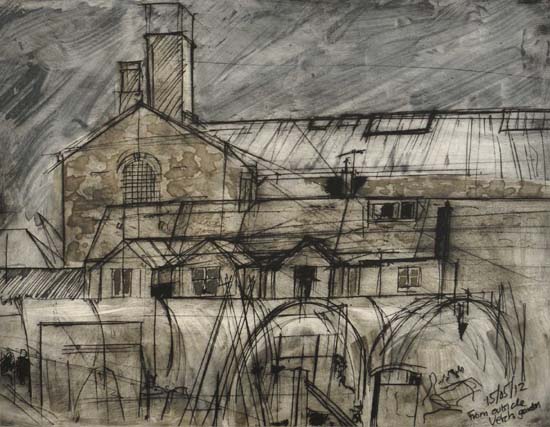
My recent work is about the urban landscape. The two month residency during May and June at Swansea Print Workshop gave me a unique opportunity to develop prints about a new location …
I was intrigued and inspired by the dominant Swansea prison building and all it implies, juxtaposed with the old Vetch grounds and the 2012 social artwork Vetch Veg project.
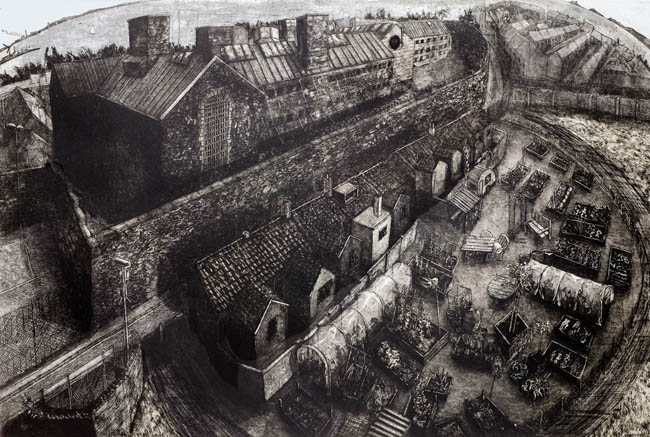
I was privileged and thoroughly enjoyed being artist in residence atSwansea Print Workshop. My lasting memory will be of meeting and working alongside such a dedicated and enthusiastic group of staff, volunteers and artists at the workshop and the generosity and friendliness of Swansea.
Aoife Layton
Born in 1979, Aoife Layton is an Irish artist living and working in Cork City. A member of Cork Printmakers, she is currently engaged in developing her drawing and printmaking practice, working predominantly in mezzotint and mixed media mezzotint. As an undergraduate Layton studied Fine Art at Galway Mayo Institute of Technology (2005) and in 2008 she received an MA in Fine Art and Art History from Aberystwyth University, Wales.
Recent exhibitions include the International Print Triennial in Krakow, the International Mezzotint Festival (Ekaterinburg, Russia) and the annual exhibitions of the Royal Hibernian Academy (RHA) and the Royal Ulster Academy (RUA). www.aoifelayton.com
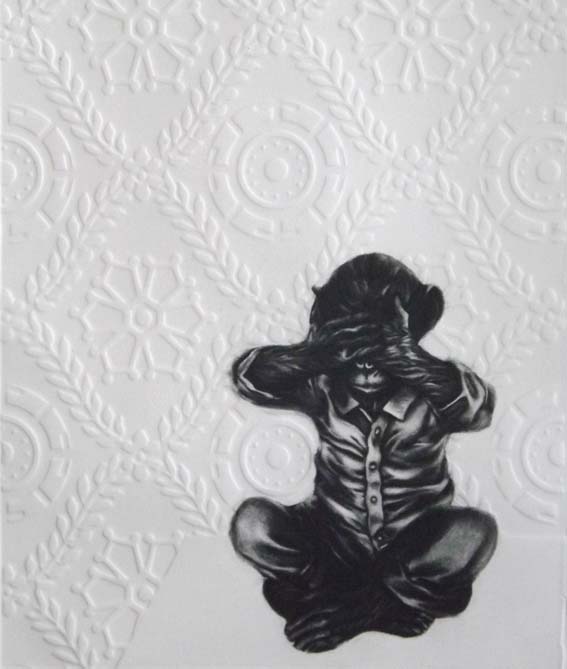
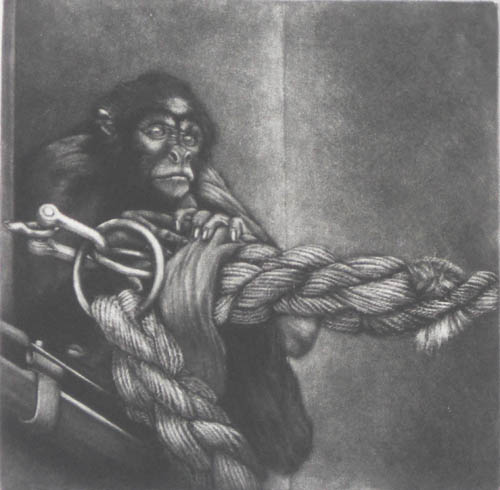
The residency afforded me the opportunity of taking time to explore alternative methods of image making to be combined with my on-going work in mezzotint engraving. …
In my work I like to play with ideas about the ambiguities inherent in our relationships with other animals. While in Swansea I had ample opportunity to observe these interactions at the WWT Llanelli, the Wales Ape and Monkey Sanctuary, Abercrave, and Plantasia in Parc Tawe Retail Park. I was struck by the differences in the functions of each of these centres, varying from conservation and philanthropy to entertainment and education.
Fiona Kelly
Fiona Kelly was born in 1985 in Westmeath, Ireland. She holds a B.F.A in Fine Art, Sculpture, received from Cluain Mhuire, Galway (2005) and a B.F.A (Honours) in Fine Art, Printmaking, from the Crawford College of Art, Cork (2008).
She has exhibited in Ireland and internationally, including exhibitions in Cork and Galway, Ireland; Shanghai, China; Zoetermeer, Netherlands (Solo); New York, USA, and Reykjavik, Iceland. Kelly’s work can be seen in the public collections of The Jyvaskyla Museum of Art, Finland; The Art Students League of New York, U.S.A; at Crawford College of Art, Eli Lilly and the Cork Institute of Technology, Ireland. www.fionakelly.co
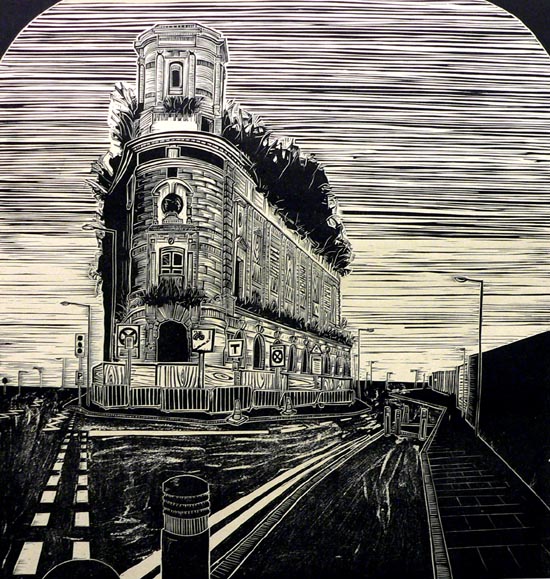
Kelly illustrates contemporary fables. In uniting banal objects, concentrated debris and throwaway remnants with playful slogans, she generates happenings. Her combinations facilitate the viewer’s questioning of the absurdities Kelly finds in unremarkable environments. What was thought to be familiar has to be reassessed.
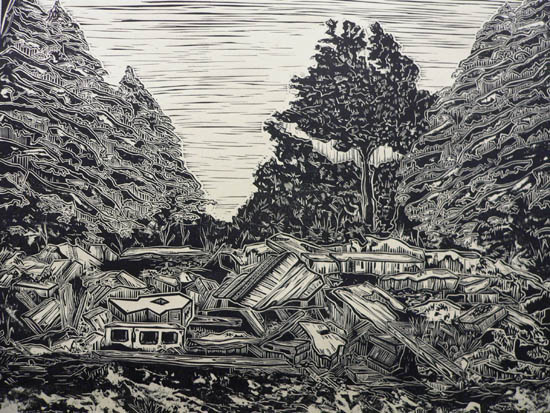
My time spent in Swansea biking, conversing, learning, scribbling and teaching has propelled my practice into a wholly new direction, tackling large compositions, drawing straight onto blocks whilst letting the image grow organically and experimenting with typography and text based imagery. The results of these processes enable me to utter this rare declaration; I am happy.
You can read more on the artists, their thoughts on their project experience and the prints they created in the accompanying project publication here. (SPW copywrite) and on the dedicated project blog.
Explorations with Ipad
Printmaking has historically absorbed new technologies into its toolkit and the iPad and associate tools offer new possibilities to be investigated and new techniques to be added to the repertoire of printmakers. Aoife Layton’s enthusiasm for, and experimentation with, SPW’s iPad inspired other members of the Workshop to try it for themselves. In addition to the drawing apps, the iPad offers a number of related features which enable artists to create artwork with strong drawing and print elements combining digital with more traditional techniques. With email and social networking sites offering methods of sharing digital art, the potential for collaborative work is waiting to be explored.
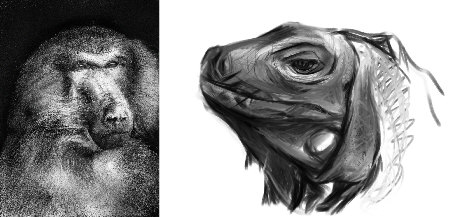
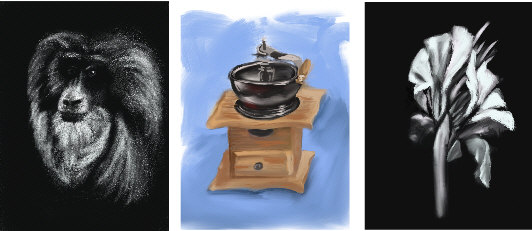
Drawn to Print in Schools Project 2012
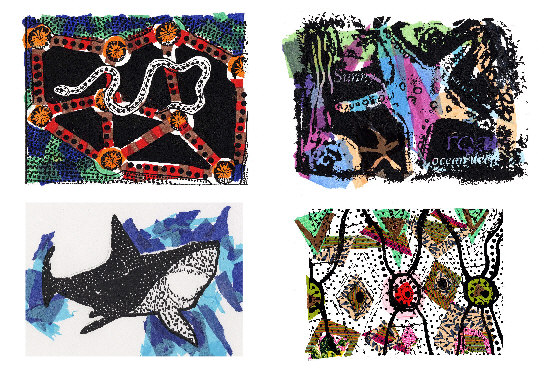
Prints produced by Bishopston School | Workshop Leader Nina Morgan
Swansea Print Workshop was delighted to be working in collaboration with the Education Department of City & County of Swansea, on a Drawn to Print In Schools project.
Taking inspiration from the different approaches of three Artists in Residence during SPW’s year-long Drawn to Print project, experienced outreach artists worked closely with students from Swansea schools in a workshop environment to explore the relationship between drawing and printmaking.
With access to the use of iPads and the well-equipped facilities of Swansea Print Workshop, students had a unique opportunity to consider both traditional and non-traditional printmaking techniques for making their artwork as well as ideas around the recording of the creative process.
This project was a great opportunity to build on a valuable partnership with The Education Department – a great supporter of our work with schools – in our mutual aim of developing young people’s skills in contemporary art.
Drawn to Print | 2012-13 | Cyngor Celfyddydau Cymru
Mae’r berthynas rhwng arlunio ac argraffu yn cynnig potensial creadigol mawr ac mae hyn yn chwarae rhan bwysig yng ngweithgareddau’r Gweithdy. Daeth y prosiect hwn â thechnegau argraffu a thechnolegau newydd a dulliau newydd o weithio i’r Gweithdy ac mae rhain yn archwilio ac yn cefnogi’r gwaith ehangach o arlunio a’i drosglwyddo i brint gwreiddiol. Hefyd, rhoddwyd cyfle gwerthfawr i ni weld a deall sut allem ehangu ein cynulleidfaoedd er mwyn diogelu dyfodol tymor hir y mudiad.
The Drawn to Print in Schools Project was made possible by grant funding received by The Education Department from The Arts Council of Wales.
The Drawn to Print project took place in 2012/2013 and was made possible with funding from the Arts Council of Wales.


